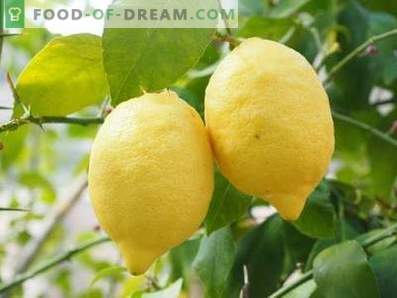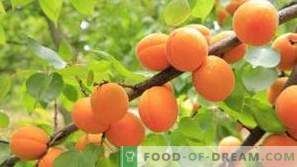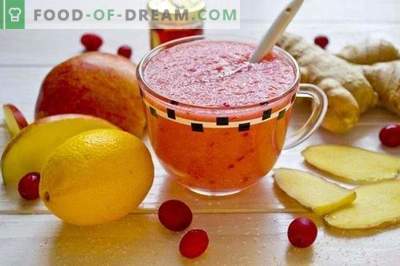
A lemon is a low evergreen tree, which belongs to the genus of citrus family Rutaceae. The name “lemon” is equally applicable to the plant itself, as well as to its well-known fruits throughout the world.
Lemon tree usually does not exceed 6-9 m in height and may have a spreading or pyramidal crown. In some cases, the plant lives to 40-48 years. The bark of the tree may be gray on large trunks and purple-red or green on young shoots. On it there are cracks and even spines.
Lemon leaves have the same characteristic smell as fruit. Their leathery surface casts a green gloss on top and has a matte light shade on the reverse side. The leaves can be stretched up to 11-16 cm with a width of 6-9 cm. Their edges are whole, without teeth, and when viewed into the light glands with essential oil become noticeable. The shape of the leaves is ellipsoid (wide) or ovoid, sharpening there are from both edges. Leaf fall from wingless or winged short stalks usually occurs every three years. An interesting feature: at first glance, a lemon leaf cannot be categorized as complex (for this, the leaf must consist of separate plates falling independently of each other). However, the stalk of a lemon leaf does not fall off with it, but somewhat later. Thus, this tree has complex leaves, which have only one fraction in the course of evolution.
The axillary flowers of lemon have a fresh delicate aroma, reaching a diameter of 2-3 cm and can be paired or single. In an obscure-toothed calyx, white or cream-colored petals are attached to the five-membered corolla, considerably bent on the outer side, which is distinguished by a pinkish shade. Light yellow lemon fruits are structurally Hesperidium and have the following parameters: length - 7-9 cm, radius - 2-3 cm. At the ends of the lemon it narrows and ends with a nipple-shaped bulge. The relief crust of fruits has a large number of glands with essential oil and is cleaned with great difficulty. The inner part of the lemons is formed by 8-10 spongy nests and sacciform hairs with juice. Such pulp is colored yellow-green and sour to the taste. Lemon seeds have a single germ and look like yellow-white or greenish seeds. The flowering of the plant occurs during the spring, and the ripening of the fruit - in the fall.
The history of lemon cultivation dates back to the southern regions of Asia. The first mention of its growth in the cities of India and Pakistan refers to the XII century. At about the same time, Arab traders brought new fruit to Southern Europe and North African countries. In the coastal regions of the Black Sea, lemon has been cultivated since the 18th century, but has not been sold.
The lemon was not found in the wild-growing state, therefore it is assumed that it is considered to be a random natural hybrid that has been developing for a long time as an independent species. Industrial cultivation of this fruit is typical for countries with a subtropical climate. In particular, lemon is widely exported from Transcaucasia and Central Asia (in the first case, as a creeping culture, and in the second, as a trench).
Nutritional value and vitamins in the composition of lemon
Lemon contains vitamins A, B, P and, of course, C, as well as up to 9% organic acids, up to 3% sugars, nitrogenous compounds, phytoncides and other essential components. Peel of lemons and leaves have a kind of reservoir with essential oil. We indicate the nutritional value of the main indicators. 100 g of lemon pulp contains:
- 0, 915 g of proteins
- 0, 15 g of fat
- 3, 03 g of carbohydrates
- 2, 12 g of dietary fiber
- 5, 75 g of organic acids
- 88, 7 g of water
- 3, 04 g of monosaccharides and disaccharides
- 0, 52 g of ash
Fresh lemon juice contains a lot of ascorbic acid, but most of it is oxidized during long-term storage. A large amount of vitamin P (citrine) prevents swelling of the brain, pain in the legs and fatigue. However, in the frozen lemons vitamin remains somewhat less.
The richness of vitamin composition can be expressed by the following numerical values:
- 0, 125 mg of vitamin PP
- 0, 013 mg of beta-carotene
- 2, 06 mcg of vitamin A (ER)
- 0, 048 mg of thiamine (B1)
- 0, 019 mg of riboflavin (B2)
- 0.222 mg of pantothenic acid (B5)
- 0.058 mg of pyridoxine (B6)
- 9,035 μg of folic acid (B9)
- 40, 25 mg of ascorbic acid (C)
- 0, 24 mg of vitamin E (TE)
- 0, 21 mg of niacin equivalent (PP)
Calorie content of fresh lemon
Nutritionists note that a significant advantage of lemon over other citrus fruits is a large amount of acids with a minimum concentration of sugars. For this reason, this fruit is characterized by a record low calorie.
- The caloric value of 100 g of lemon is 34 kcal.
- Calories 1 pc. lemon medium size (65 g) is equal to 22, 1 kcal.
- The calorie content of lemon with skin (120 g) is approximately 40, 8 kcal.
Because of its low calorie content and the ability to break down fat cells, lemon is very useful for those on a diet. The fruit enhances the metabolism and is itself completely harmless to the figure. If lemon is used together with honey or sugar, then it is important to take into account the caloric content of these additives.
Mineral composition of lemon
Lemon pulp contains all the major macro and micronutrients required by the body. Especially high content of calcium, potassium, copper and boron.
100 g of fresh lemon contains:
Macroelements:
- 42, 15 mg of calcium (Ca)
- 13, 4 mg of magnesium (Mg)
- 10, 83 mg of sodium (Na)
- 165, 7 mg of potassium (K)
- 21, 61 mg of phosphorus (P)
- 4, 54 mg of chlorine (Cl)
- 9, 73 mg of sulfur (S)
Trace elements:
- 0, 64 mg of iron (Fe)
- 0, 17 mg of zinc (Zn)
- 0, 251 mg of copper (Cu)
- 0, 033 mg of manganese (Mn)
- 10, 28 μg of fluorine (F)
- 1, 03 μg of molybdenum (Mo)
- 177 mcg of boron (B)
Useful properties of lemon and its juice
- The juice of one lemon fruit contains a third of the daily value of vitamin C for an adult, and even about 14% is in a tablespoon of peel.
- Organic potassium in lemon juice stabilizes the work of the heart, blood vessels and kidneys. Also, in combination with ascorbic acid, citrine has a positive effect on metabolic processes in the body and makes the walls of blood vessels strong and flexible. Therefore, lemon juice is often recommended for older people with atherosclerosis. At the same time, pectins remove many toxins and even heavy metal compounds from the intestines.
- The bactericidal properties of lemon can destroy more than a dozen types of pathogens. To enhance the action of lemon against colds, its pieces are added to plantain, mint, and sage tea. Thanks to this healing mixture, the level of calcium in the body is maintained at a sufficiently high level.
- This fruit has a beneficial effect on digestion processes and helps the removal of slag accumulations from the intestine. Also, lemon is often included in medicines against diseases of the throat and lungs. Lemon juice can alleviate migraines and headaches, and is also an effective diuretic. The fruit can even heal skin rashes and boils and maintain oral hygiene.
- Despite the sour taste, lemon reduces acidity in the stomach. The antiseptic effect of lemon is typical not only for juice and pulp, but also for peel. Lemon squeeze is used to relieve fever and strengthen the immune system. Vitamin C makes lemon juice an excellent antioxidant.
- Like the rest of citrus fruits, lemon prevents putrefying processes, which is very important for liver tissue. In particular, this fruit removes from the body even those toxic deposits that cannot be removed by any other means. Therefore, lemon drinks are often drunk by those who seek to rid the body of toxins. If in a glass of orange juice add squeeze a small lemon and a little raw yolk, you get a nourishing and at the same time laxative.
- Traditional medicine worldwide recommends lemon for scurvy, dropsy, malaria, jaundice, kidney disease, and even pulmonary tuberculosis.
- In ancient times, lemon was used to restore women's health; so, in pregnant women, this tool helps to remove toxicosis.
- The peel of fresh lemon and essential oils in its composition reduce the likelihood of intestinal gases, and also tone up the body and have an antiseptic effect in the intestinal cavity.
- The strong lemon scent not only cleans and deodorizes the air, but also boosts the mood.
- For those who want to have a lot of time, but are limited in time, lemon is really indispensable: the use of this fruit can reduce the time required for a good rest at night. A day will not need to do a lot of snacks, because the lemon gives a feeling of satiety.
Contraindications to eating lemon
This fruit, which due to its properties has a strong effect on the body, cannot be consumed in the following diseases:
- duodenal ulcer and stomach;
- pancreatitis;
- kidney disease;
- individual intolerance to citrus fruits;
- problems with the acidity of gastric juice;
- allergic to peel and lemon peel.
The frequent addition of lemon to the diet sometimes contributes to the development of heartburn.























